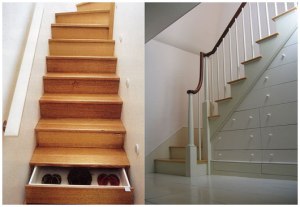If you are an interior decorating aficionado, you understand the importance of creative storage. We decorators need room to store all of our seasonal decor, textiles, and favorite items when they are relaxing in the off-season. Plus, I don’t know a serial designer out there who doesn’t also love to entertain, which means even more storage for platters, dishware, and glasses. Sometimes, interior design is just as much about what you can’t see as what you can.
Here are some room by room ideas for how to increase your storage capacity in some of the most unlikely spaces. This can help you to store all of the extras that tend to become cluttered if you aren’t too careful.
The Kitchen. If you are planning a remodel, forget about the color wheels and cabinet door styles for just a moment (I know, it’s hard to do!). Instead, focus on how your cabinet and wall spaces can be functionally upgraded to the limit. Smart and organized kitchen storage is a reverent sight to behold, and we all shake our heads in wonder when we see it in person. The time you spend to be thoughtful now, will pay off for years to come.
Your Staircase. What? The staircase? Yes! The staircase is one of the most overlooked storage opportunities in the home. It’s vast, and it has lots of empty spaces that could be full of specialty cocktail glasses, seasonal cook books, and interior decorating accessories. If you happen to be in the process of designing your home, bully for you because you can begin working with your architect or contractor to modify the planned staircase. Otherwise, you can hire a contractor to take a look at your staircase and some of these pictures, to determine how your staircase(s) can be amended.

The Laundry Room. Don’t let a single wall or nook in your laundry room or mudroom go un-purposed. If you see a blank space, think shelves. If you see a drawer space, think pull-out organizers. If there is a wide open closet, determine how the space can best be used. It’s amazing what well-planned storage (even in a small space) can do to reduce clutter in your interior decorating plan.
The Bathroom. If there is one room that is the most prone to clutter, it is probably the bathroom. We are usually in there in a flurry, and there are often deep-set cabinets that quickly become a mish-mash of stuff if you aren’t careful. However, just like the kitchen, you can create pull-out drawers and organized shelving and cabinetry that will help you keep things neat, stored, and clutter-free. Also, in an open floor plan, walls are usually a part of the building’s structure. However, bathrooms are the one spot where interior walls may only be functional, in which place they can be used for more hidden storage opportunities.
Closets. It can’t be emphasized enough what a difference an efficiently organized closet is. You will gain loads of usable space by making the investment in a professional closet design. Or, you can spend time at a local home improvement store and buy pre-made closet organizers that will also do the trick. Either way, the more space you have to store things, the less visible they will be in your actual living space.
Taking the time to redesign functional storage spaces will pay off in the form of an organized, clutter-free, and spacious interior design.
Whether you need help with interior decorating, or are looking to redesign your storage spaces, we can help. Contact Kristina Wolf Design, Inc. for modern interior design expertise.

